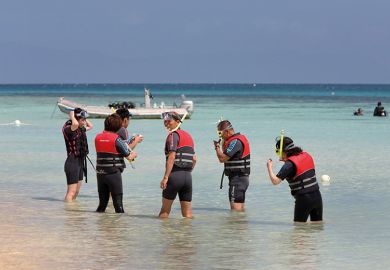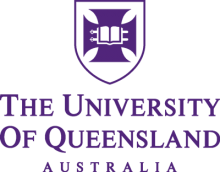Australia’s vice-chancellors have a dream. They want their universities to be among the world’s best and recognised as such. It’s not necessarily a vanity thing. They passionately believe in the power of university teaching and research to transform people’s lives.
Some of the time, at least, they’re absolutely right. Cue the familiar examples: the University of Melbourne’s contribution to the cochlear implant. The University of Queensland’s Gardasil vaccine that has slashed cervical cancer rates around the world.
Lifesavers like Gardasil are also serious money spinners, vice-chancellors stress, commissioning any number of reports to demonstrate universities’ multiplier effects. Every dollar spent on university research produces A$10 (£5.50) in economic benefits. Every international student spends A$300,000 (£165,000) in Australia. That sort of thing.
To vice-chancellors, it’s open and shut. If the government funds universities to be world-beaters, taxpayers will be rewarded in spades.
The problem is that Australia’s political leaders, the current crop at any rate, don’t share the dream. They’ll wax lyrical about Australia’s world-class universities but when it comes to dipping into the hip pocket, other priorities prevail.
Federal government allocations to universities rose by about A$405 million or 2.5 per cent last year, according to the institutional accounts of every public university apart from the Australian National University, which is yet to release its annual report.
Inflation in Australia was around 1.9 per cent in 2018. Wages, universities’ biggest cost, rose a bit more. Add to that the modest increase in domestic enrolments, even if they’ve slowed to a crawl since the government capped university places at the end of 2017, and universities can expect precious little change from their 2.5 per cent commonwealth government funding increase.
Fortunately, there’s somewhere else they can turn. Their earnings from international students rose by about A$1.3 billion or 17 per cent last year. Several of Australia’s richest universities saw their annual turnover swell by A$100 million or more in a single year, with most of the extra money coming from foreign tuition fees.
Australian universities are really, really good at ushering in foreign students. They cultivated their skills under the Colombo Plan before recognising the commercial possibilities late last century. From the early 2000s, international student earnings became an increasingly significant component of revenue.
These earnings barely skipped a beat at the end of last decade, when returns in other educational sectors were decimated by a disastrous trifecta of unfavourable exchange rates, visa settings and media coverage in India. Then in 2014, when a startlingly harsh federal budget made it pretty clear that universities could no longer look to taxpayers for growth funds, the brakes came off. The biggest and most prestigious universities abandoned the restraint that had somewhat moderated growth in international enrolments until then, and went to town.
The push for foreign dollars hasn’t abated. Last year, in absolute dollar terms, international student revenue rose more than commonwealth funding at 28 of 37 public universities – and 34 of the 37 in proportional terms.
In the space of one year, the average university’s share of income from international students soared almost three percentage points, from 20.8 per cent to 23.5 per cent. Big universities with foreign branch campuses – such as RMIT and Monash – reaped up to 40 per cent of their income from international students, with the other large inner city institutions of Sydney and Melbourne not far behind.
The average operating margin at Australian public universities last year was around A$53 million. Without the extra cash injected from foreign students, it would have been about A$17 million. The shortfall would have played out differently at different institutions, of course, but the 3.1 per cent buffer at the typical university – already cutting it fine when you think about maintenance backlogs and the need for new kit – could have looked more like 1 per cent.
Of course, such counterfactual analyses ignore the reality that without that extra A$1.3 billion of international tuition fees to play with, vice-chancellors would have made different choices. Labs wouldn’t have been built. Research stars wouldn’t have been hired. Discoveries mightn’t have been made. Rankings might have tanked.
The benefits and drawbacks of rampant international education have been well ventilated. Clearly, most vice-chancellors have decided that the advantages warrant the risks. Foreign tuition earnings can bankroll the universities of their dreams. Taxpayer funds can’t.
If the nightmare scenario suggested in last week’s Centre for Independent Studies report transpires – if a collapse of the yuan or a clampdown on currency conversion suddenly stops Chinese students from coming – universities will have to drastically tighten their belts. And maybe we’ll end up with the sorts of universities we would have had anyway, if this foreign student adventure had never taken place.
John Ross is Asia-Pacific editor at Times Higher Education. He is based in Sydney.
Register to continue
Why register?
- Registration is free and only takes a moment
- Once registered, you can read 3 articles a month
- Sign up for our newsletter
Subscribe
Or subscribe for unlimited access to:
- Unlimited access to news, views, insights & reviews
- Digital editions
- Digital access to THE’s university and college rankings analysis
Already registered or a current subscriber?











